- Living & Working abroad
Cultural Differences When Moving Abroad
Relocating abroad is an exciting journey that opens up new opportunities, but it also comes with its own set of...
Read moreGuides
Welcome to the beating heart of Spain - Madrid! This bustling metropolis offers a unique blend of rich culture, historical charm and modern innovation, making it a top choice for expats looking to live and work in Madrid. Experience world-class cuisine, a vibrant arts scene, and an exceptional work-life balance while immersing yourself in true Spanish lifestyle. Join us as we explore the many wonders of Madrid and unveil the secrets of success in this enchanting city.
Jump right to...
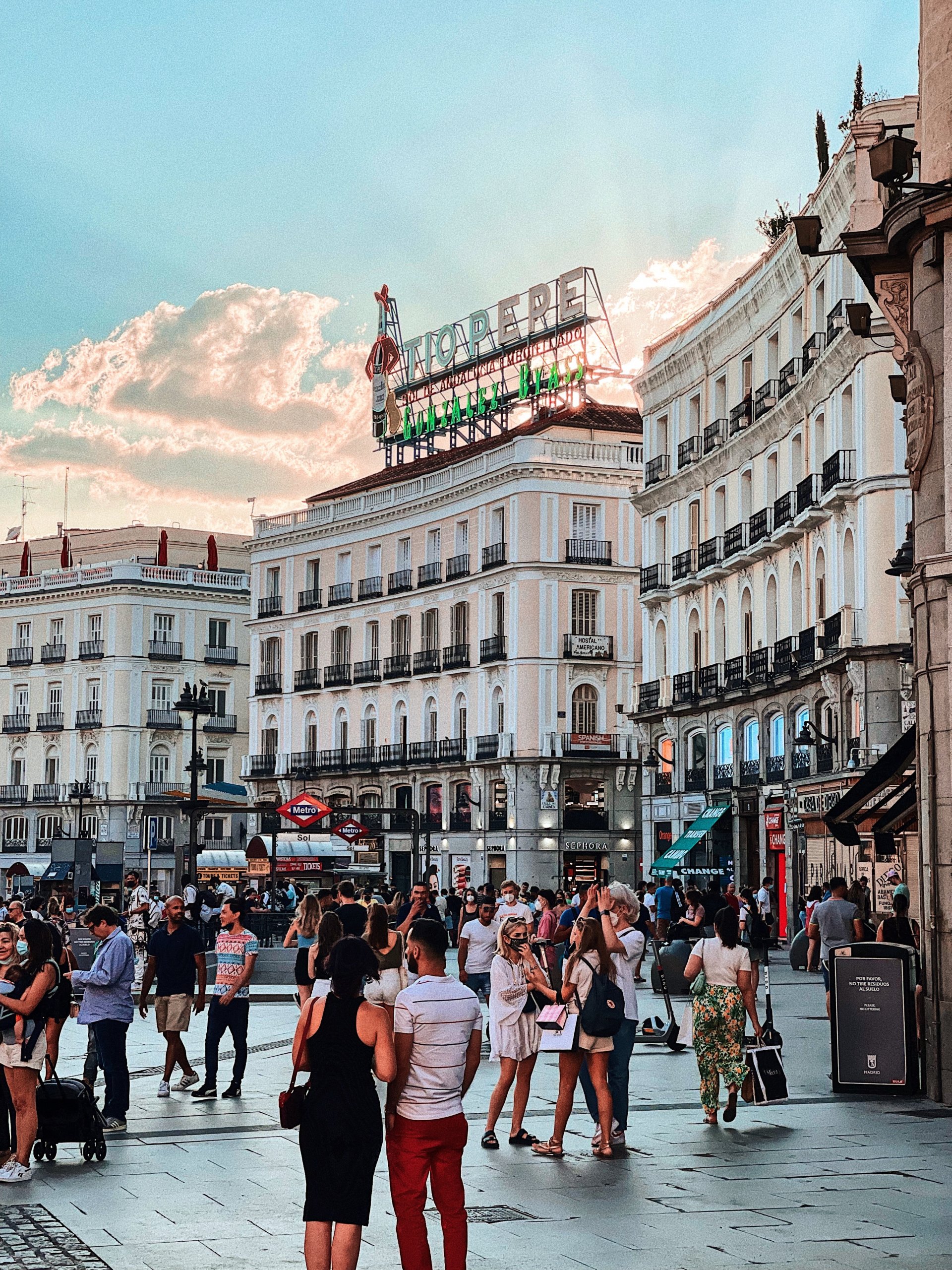
Basic information about Madrid
Madrid has been the capital of Spain since 1606 and is a densely populated city with 3,2 million residents. One of the benefits of living in Madrid is the pleasant climate, you can enjoy early summer heat all year round!
Did you know…?
Relocating to a new city might seem a bit overwhelming for most people, but it doesn't have to be as big of a project as you might think. We will help you with one of the essential parts of the process - finding accommodation in Madrid.
First of all, what is important to you? The rent, the location, and access to good public transport options are usually at the top of the list. But being close to sports- and exercise facilities, nightclubs, nature, restaurants, cafes, and other hobbies and interests are also good to keep in mind.
Madrid is a huge city so to facilitate the area it has been divided into 21 different districts. These are then divided into 128 different neighbourhoods, which in Spanish are called barrios.
When looking for accommodation in Madrid it is a good idea to read up on the different districts. There are, for example, some that are more suited for families and others that are more exclusive. Find more under the categories nightlife, family-friendly, cheap, exclusive, and cozy here below.
The Centro district, focusing on the Puerta del Sol and Huertas neighborhoods, is popular with tourists, students, and young people due to its numerous trendy bars, restaurants, cafes, and nightlife.
To experience a cosmopolitan environment, head to the neighborhoods of Salamanca, Chamartín, or Chamberí. And if you are looking for LGBTQ-friendly nightlife, the district of Chueca is more or less known for being an ally to the LGBTQ movement.
For a more artistic atmosphere, Las Letras or La Latina is perfect. These are relaxed and bohemian neighborhoods with long pedestrian streets.
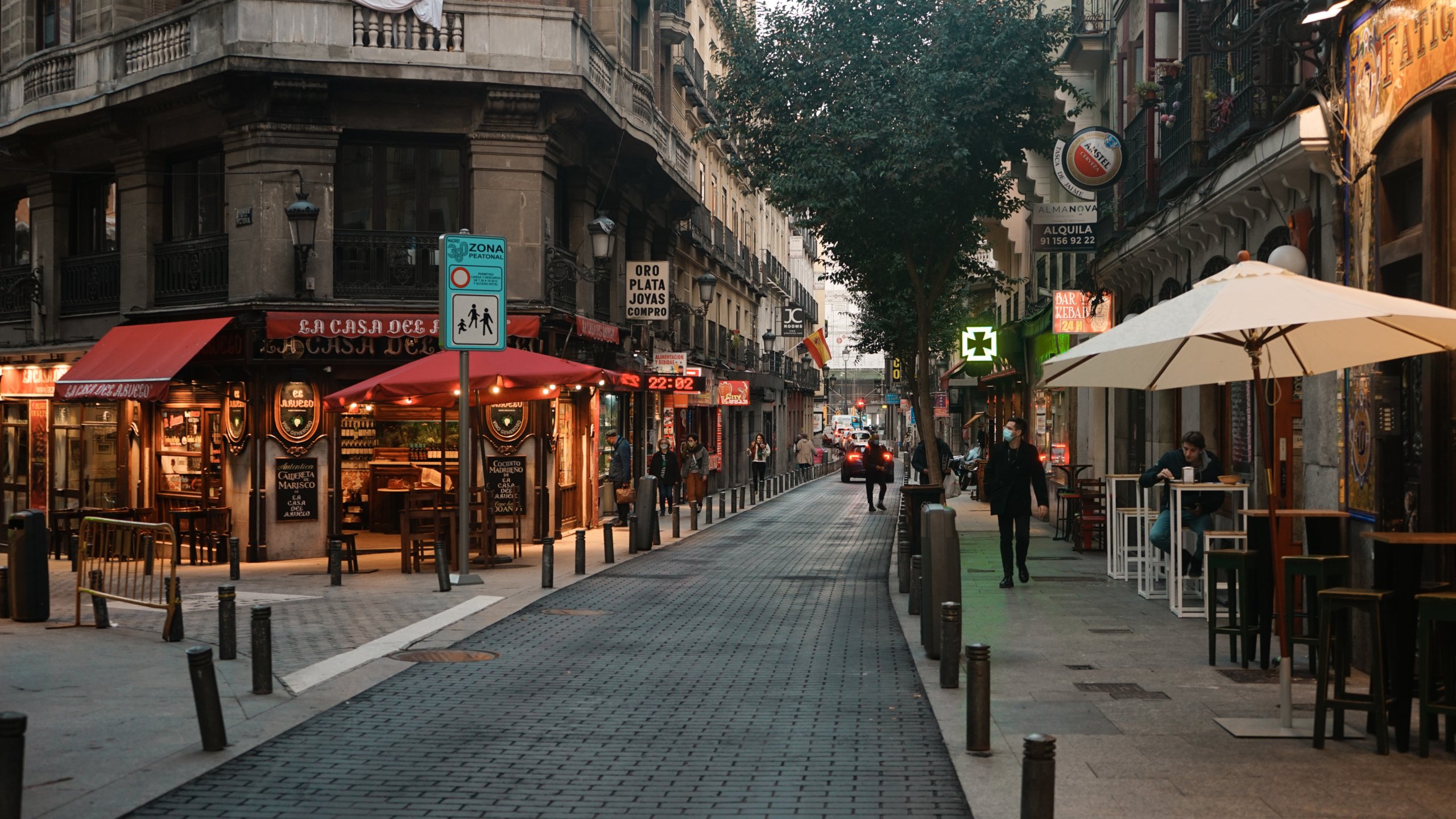
Madrid is a city that offers activities for all ages and entertainment for the whole family! Visit one of the many parks, museums, monuments, and amusement parks, or spend a day looking through the many shops for a shopping spree. Los Jardines del Buen Retiro is an amusement park in Centro that you don't want to miss!
It is natural to want to live in a safe neighborhood if you have children. It may therefore be good to choose one of the quieter and safer areas, such as Salamanca which is also full of attractions. One of the most popular ones is the Royal Palace, Palacio Real.
Do you have a football-loving family? Then the area of Chamartín is the perfect place. And you get to score some points with your little ones by mentioning that you will live in the same city as Real Madrid's home stadium.
A good school district in Madrid is Alcobendas. Here you will for example find a Scandinavian school that offers a preschool, primary school, and high school. In addition, the school also offers afternoon activities such as music, sports, dance, gymnastics, and ceramics.
Apartments are cheaper than houses in Madrid, and if you are looking for a cheaper district to rent, Tetuán has many nice options. Thanks to great public transport connections you can get to the city center in just 20-30 minutes.
Another area with reasonable rent prices is La Elipa in east Madrid. This neighborhood is part of the San Blas-Canillejas district and offers all basic needs such as grocery stores, restaurants, cycle paths, and green areas.
You can also find cheaper apartments in the areas of Arganzuela, Latina, Puente de Vallecas, Moratalaz, and Usera (south of the Madrid city highway).
Looking for a district of prestigious residential areas, exclusive restaurants, and designer shops? Salamanca is the one. In fact, the area even has a street called the Golden Mile, which is a street full of luxury stores.
Some popular neighborhoods in Salamanca are Goya, Lista, and Recoletos which are unique for their grid-like structure and perpendicular streets. Those who live in Salamanca have good access to well-known banks and companies. Locals describe the area as peaceful, secure, orderly, and luxurious.
If you’re looking for small, cozy streets with beautiful, ancient buildings and squares, La Latina in Centro is probably a neighborhood to your taste. The city's most famous flea market, called Rastro, is open every Sunday and holiday and offers opportunities for both bargains and socializing.
Chamberí is a good fit if you are looking for a trendy, eventful, bohemian district for less money. Chamberí is a traditional 19th-century neighborhood in Madrid that has recently seen an abundance of modern architecture.
Finding accommodation in Madrid is not always the easiest. But thankfully, there are several different approaches when trying to find the right home in your new city.
Rent prices in Madrid are cheaper compared to other European capitals, like Stockholm or Berlin. This includes housing prices which are generally 50% cheaper. But like other cities, it is more expensive the more central you live.
A central one-bedroom apartment in Centro, Aravaca, Salamanca, or Chamartín in Madrid, will cost you approximately 1100 euros a month, which is cheaper than an equivalent apartment in Stockholm. The latter will cost around 1450 euros a month.
If you are looking outside Madrid’s central areas, you can find a one-bedroom apartment for approximately 800 euros a month. The cost for a similar apartment in Stockholm is 1100 euros.
If you need more space, a three-bedroom in Madrid will be approximately 1800 euros a month in the central parts of the city and 1300 euros a month for areas outside the center.
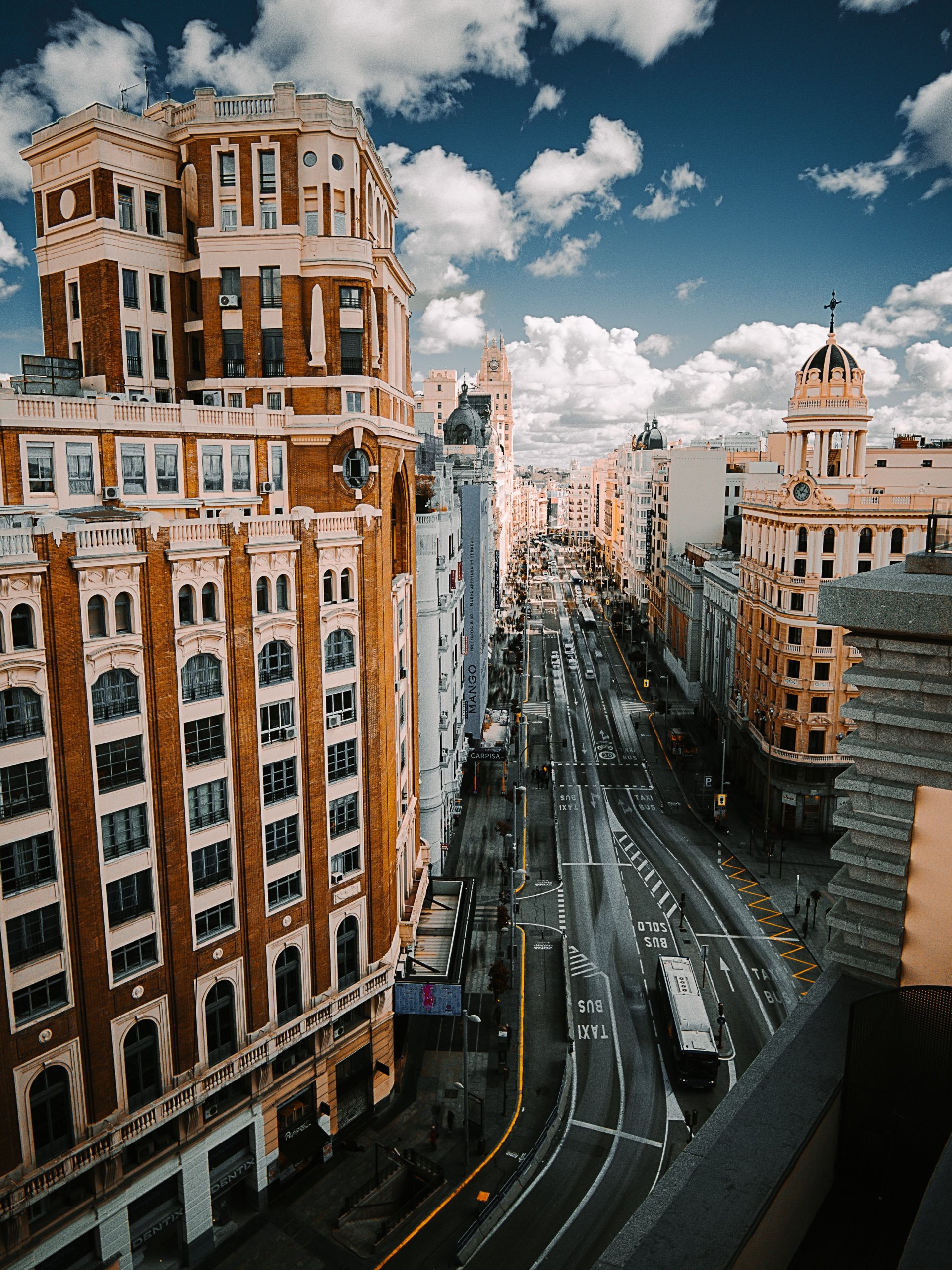
If you are instead considering buying an apartment in Madrid, it may be good to know that the price varies depending on where in the city the home is located, its condition, and its size. Generally speaking, housing prices in Madrid are almost halved compared to Stockholm in Sweden. (to translator:use local capital, I will adjust numbers)
Less central apartments, in districts of the city highway such as Moratalaz and Usera, are cheaper than in the more central neighborhoods. The price is around 3650 euros per square meter.
A central apartment in the Centro or Chamartín areas costs approximately 5400 euros per square meter.
If you are coming to Madrid searching for luxury and have a big wallet, there are many apartments that would suit you. An exclusive apartment in Salamanca can cost up to 80 million SEK!
Madrid is a city full of life, and the minute you step out of your door you will find something entertaining or fascinating, whether it's art, sports, food, or nature.
If architecture is your cup of tea there are many aristocratic parts in Madrid, one example is the royal palace Palacio Real which is also the world’s second-largest palace. Other beautiful buildings include the Opera house and Catedral de la Almudena, a roman-catholic cathedral.
In Madrid, you can visit over 60 museums, for example, Reina Sofía, a National Museum that has works by famous artists such as Pablo Picasso, Joan Miró, Salvador Dalí, and Juan Gris. Another museum is the Thyssen Bornemisza Museum with over 800 paintings. Another option is the Prado Museum which is one of the world's finest art museums.
If you need your daily dose of nature, plenty of well-kept green parks make the capital one of the greenest in Europe. Some of the beautiful parks are Retiro Park - formerly the park of the Spanish royals, Casa de Campo, Juan Carlos, and Real Jardín Botanico. In the botanical garden Real Jardín Botanico, there is a statue of the Swedish botanist Carl Von Linné.
In the parks, you can take a walk or jog, have a picnic, read a book, enjoy the sun, feed squirrels, or paddle in one of the ponds.

Madrid is full of sightseeing opportunities, from the beautiful castle Palacio Real to historic squares and towering buildings. A popular tourist attraction is the Plaza Mayor, a plaza from the 17th century. Another popular square, which is also known as the center of Spain as all roads start from here, is Puerta del Sol. On the square, you will see a sign that says “0 km”.
The oldest railway station in Madrid, the Atocha station, is a fantastic building worth a visit. It was built in 1851 but went through some renovations by Rafael Moneo at the beginning of the 20th century. One aspect that makes the building extra special is the waiting area, which is filled with exotic plants making it look like a jungle.
You will have basically unlimited options for food and drinks in Madrid, but one of the most common dishes is tapas. The range of restaurants and bars goes from smaller neighborhood pubs to luxury world-class restaurants.
Something to remember is that most restaurants open for dinner at 9 PM, something many expats might not be used to. It is also good to make a reservation in advance to make sure you get a table.
Two of the most famous restaurants in Madrid are Diver-XO which has been awarded three
Michelin stars and run by star chef David Muñoz, as well as Restaurante Etimo by
Begin Fraire.
For classic Spanish cuisine, a visit to Casa Lucio is recommended. If you want to try exquisite meat Restaurante Zerín is the place to be, for delicious shellfish you should go to Ribera do Miño, and if you want to try the best paella in Madrid La Barraca is for you.
Something that is strongly associated with Spain is flamenco, a type of art form with music, singing, and dancing. To experience the dance, you can visit Corral de Moreria, this is where the best dancers come to perform. Another flamenco location is Casa Patas where there are performances every night.
Another quite controversial activity native to Spain is bullfighting. It is an activity that is either loved or hated but nevertheless, it is an integral part of Spanish culture. If you want to witness the bullfighting you can go to Plaza de Toros de Las Ventas, in Madrid.
Something that is considered holy in Madrid is football, and you have probably heard of the city’s three teams - Real Madrid, Atlético de Madrid, and the suburban team Rayo Vallecano. Real Madrid holds the record as the team that has won La Liga the most times.
Madrid is also a great city for shopping, you can visit everything from big shopping malls like ABC-Serrano, El Jardín de Serrano, or La Vaguada, to small street markets.
Madrid also has a lot to offer when it comes to the nightlife scene. The best days of the week to go out are usually Thursday, Friday, or Saturday, but keep in mind that bars close at one o'clock. Nightclubs are usually open till three or six in the morning.
It is not unusual to make new friends in bars or cafes in Madrid since the locals
are very social. But another good option if you want to meet people, is to hang out in Malasañas, a student-friendly area, with many coffee shops and bakeries. Whilst there, you should visit Calle Fuencarral, the lively main street with lots of shopping. Another popular meeting place in the area is Manuela Malasaña square.
Other ways to meet new people include getting involved in volunteer work, going to
yoga, or language school, getting to know your neighbors, and shopping locally. There are also websites like couchsurfing.com or meetup.com that can help you find like-minded people.
To find other expats in Madrid you can:
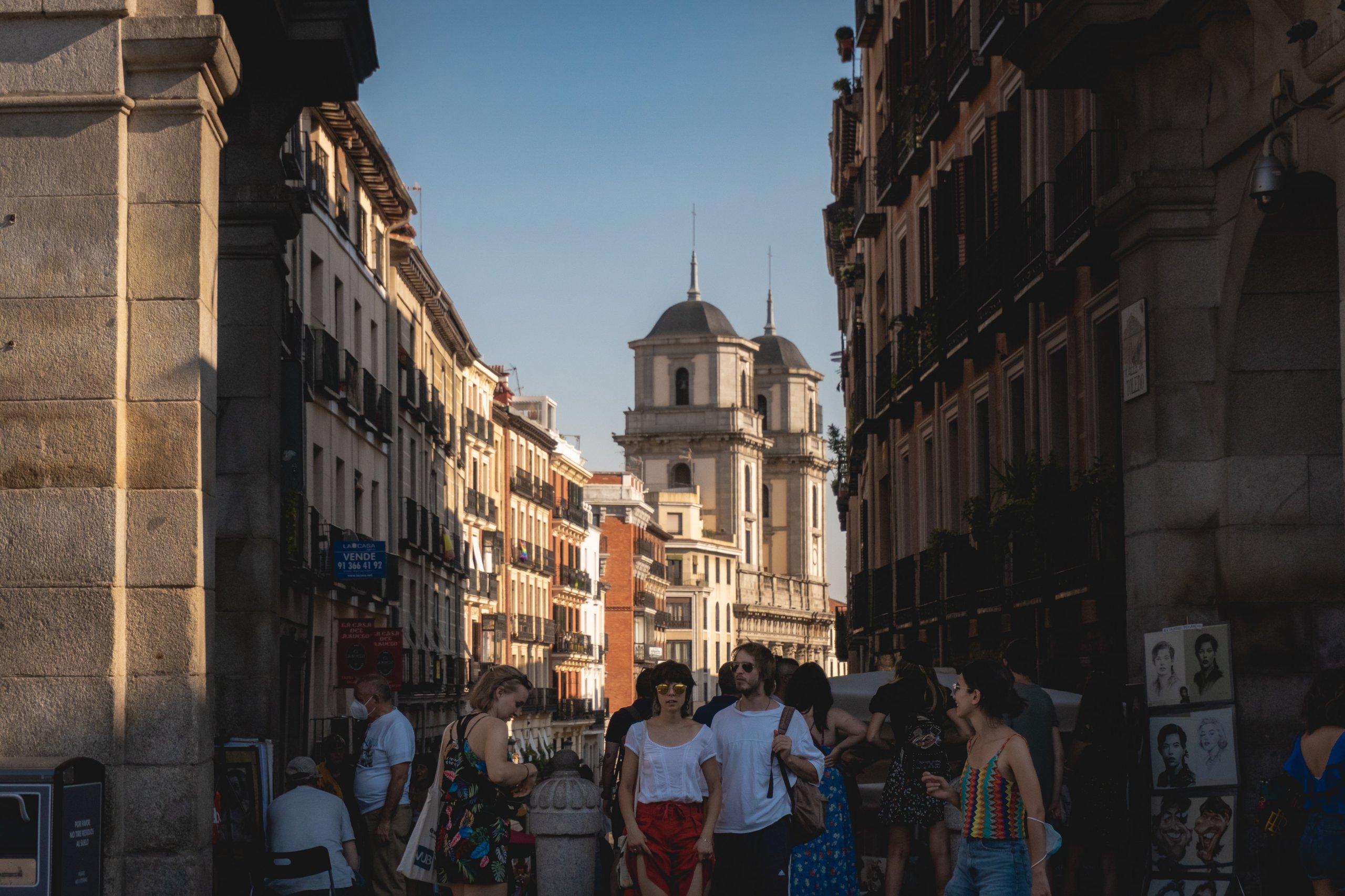
The cost of living in Madrid is lower compared to Northern and Central Europe, especially when it comes to the costs of food, transport, and housing prices. However, when it comes to the internet, telephone bills, furniture, and electricity, the prices in are about the same in Spain.
The average monthly salary in Madrid is around 1500 euros, but as an expat, you can often expect a higher salary.
When you go out to eat at a restaurant in Madrid, the food is available in all price ranges. Lunch in Madrid might cost about 12-20 euros, which is roughly the same as in Sweden.
A three-course meal, however, is almost 20% cheaper in Madrid. (to translator:use local capital, I will adjust numbers)
If you prefer to cook at home, you can go to a local market to buy fresh groceries. There are grocery stores such as Mercadona, Lidl, and Aldi with good prices.
Buying clothes in Madrid can be either cheap or expensive depending on where you shop. In the city, you will find clothes from local stores or markets, as well as well-known stores such as Zara and H&M. But there are also luxury shops with French, Spanish, or Italian brands. Clothes and shoes are around 20% cheaper in Madrid than in Sweden. (to translator:use local capital, I will adjust numbers)
A visit to the cinema costs approximately 10 euros per person in Madrid. A subscription to Netflix or HBO in Spain costs around 15 euros a month.
Prices for concert tickets vary, depending on which artist is playing and in which arena. But you can expect a concert ticket in Madrid to cost between 20 and 200 euros.
There are several efficient options to choose from when you want to get around in Madrid. The easiest way is by public transport.
For a monthly cost of about 80-100 euros, you can travel by public transport with the subway and buses in Madrid. Public transport is well-functioning and usually on time. If you prefer to buy single tickets, there are many ticket machines around the city or you can download an app.
Madrid is also a great city for driving, even though it is a big capital. The roads and drivers are calm compared to many other cities and there is rarely any road rage or anyone that pushes ahead. However, it can be difficult to find parking and if you have a non-Spanish-registered car. It might be best to park in a parking garage to avoid burglary or getting it stolen.
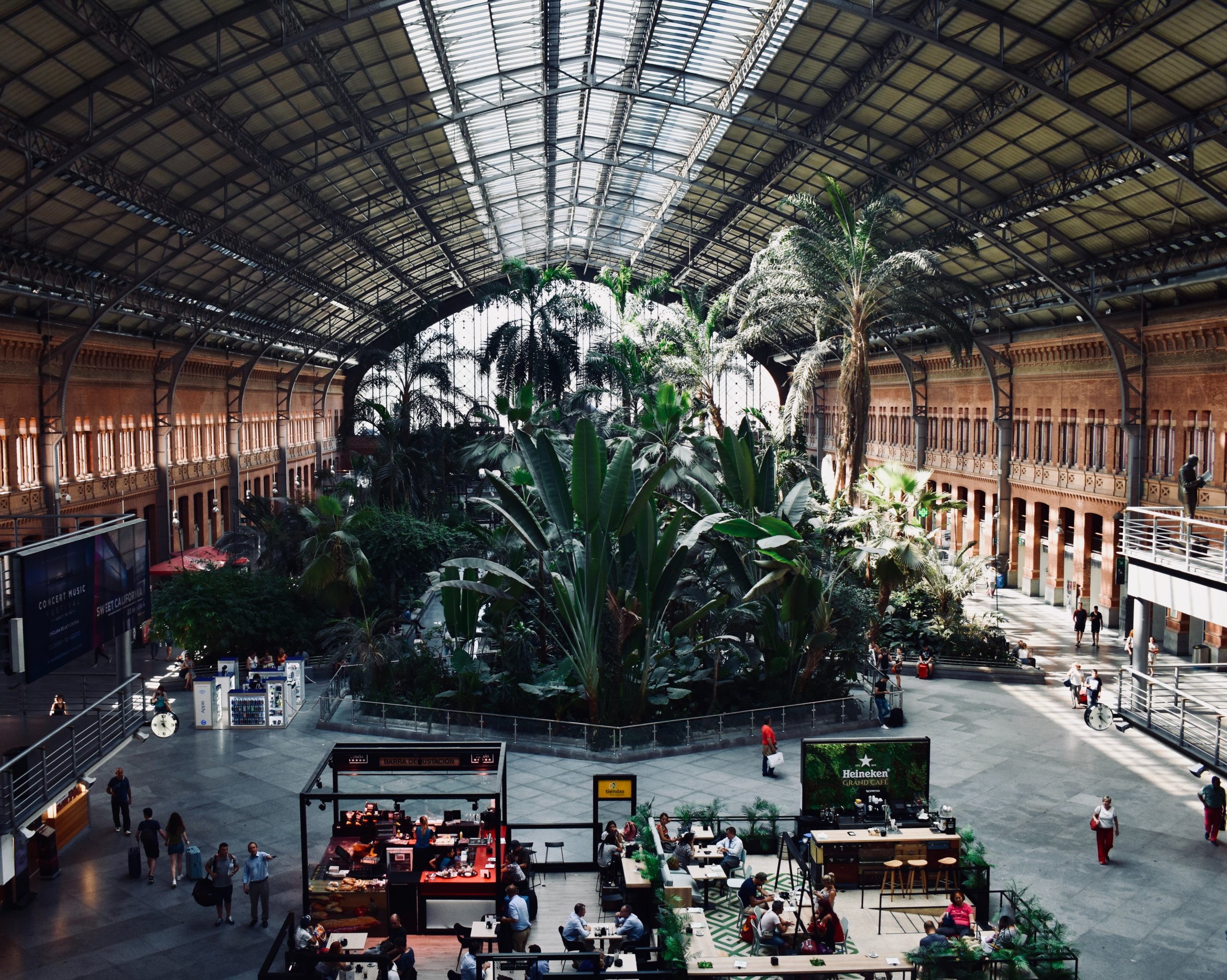
In Madrid, the locals mainly speak Spanish, but in many hotels and in the restaurant industry most people can speak English.
If you would like to learn Spanish whilst in Madrid, two of the city's five universities (Universidad Complutense and Universidad de Alcalá) have Spanish courses for foreigners. There are also private schools, apps, and material on the internet to help you with the new language.
Some common words and phrases in Spanish are:
Since Spanish residents often have limited language skills, there are often several jobs on the labor market where companies are open to hiring people from other countries.
Handicrafts and self-employment are common occupations in Madrid because it is relatively easy to run your own business in the city. But also, IT jobs have gotten very attractive given the digital development.
Common jobs for expats who do not speak Spanish in Madrid are
When you live and work abroad, you need to obtain a tax number (NIE), with this you are eligible to get care from public healthcare if needed. Just like in many other countries, basic healthcare is free for taxpayers who contribute to the social security system, in Spain. Tax rates in Madrid vary from 19 to 45 percent depending on your salary.
If you want extra security, you can choose to extend your coverage with private insurance.
As an EU citizen, no visa is required, but some things you need to consider
are:
You can read more about registration and administration in Spain here.
Relocating abroad is an exciting journey that opens up new opportunities, but it also comes with its own set of...
Read moreThere’s great comfort in connecting with other expats who can share their experiences from the destination you’re considering because every...
Read more
